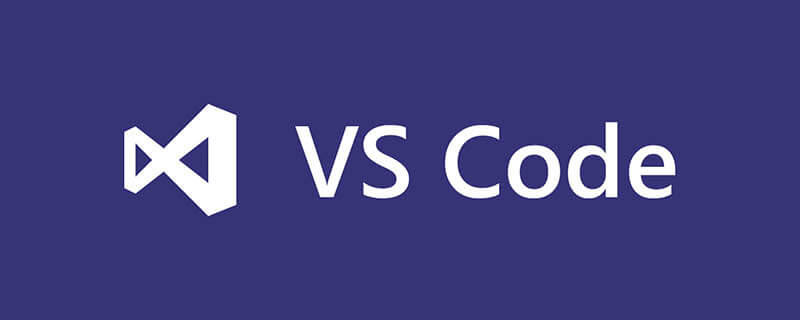NULL in C language means a null pointer that does not point to any memory address, but different compilers have slightly different definitions of NULL, which may lead to portability problems. Confusing NULL and integer constant 0 will cause semantic differences and compiler errors. Dereference of NULL pointers is extremely dangerous and should be avoided. In dynamic memory allocation, NULL means that memory allocation failed and the return value should be checked after using the allocation function. Developing good programming habits, explicitly initializing pointers and checking validity is the key to writing robust C code.

NULL in C: Traps and Tips
Many beginners think that NULL is very simple, isn’t it just a null pointer? In fact, NULL in C is much more complicated than you think, and you will fall into a pit if you are not careful. This article will explore all aspects of NULL in depth, give you a deeper understanding of it and write more robust C code.
First, we need to be clear: NULL means a null pointer, which does not point to any valid memory address. But this is just a superficial phenomenon, and the actual situation is much more complicated. Different compilers and operating systems define NULL slightly differently, which can lead to some subtle portability issues. Some compilers may define NULL to 0, while others may define (void *)0. This seemingly subtle difference may cause imperceptible bugs.
For example, suppose you write a function with a parameter that is a pointer to the structure:
<code class="c">void my_function(struct my_struct *ptr) { if (ptr == NULL) { // 处理空指针的情况return; } // ... 处理非空指针的情况... }</code>
If an uninitialized pointer is passed in when calling this function, the program may crash under some compilers, but can run by luck under others. This is because the value of an uninitialized pointer is unpredictable, it may be equal to NULL or may be equal to other values. Therefore, never rely on the value of an uninitialized pointer . Always explicitly initialize the pointer to NULL, or give it a valid address.
Let’s look at another common mistake: confusing NULL and 0. While they can be used interchangeably in many cases, they are semantically different concepts. NULL represents a null pointer, while 0 is an integer constant. In some cases, this confusion can lead to compiler warnings or even errors. The best practice is to always use NULL instead of 0 to represent a null pointer, which can improve the readability and maintainability of the code.
Next, let's talk about dereferences of NULL pointers. This is a very dangerous operation in C, which can cause the program to crash or unpredictable behavior. Never try to dereference a NULL pointer. The compiler usually won't stop you from doing this, but the runtime will give you a surprise - a segmentation fault. So, be sure to check if the pointer is NULL before accessing the memory pointed to by the pointer.
Finally, let's talk about some advanced usage and optimization tips. NULL plays an important role in handling dynamic memory allocation. When the malloc() or calloc() functions cannot allocate enough memory, they return NULL. Therefore, after using these functions, it is necessary to check whether the return value is NULL to avoid memory leaks or program crashes.
In short, understanding NULL is not just about understanding its literal meaning, but also about its behavior under different compilers and operating systems and its important role in memory management. Developing good programming habits, always explicitly initializing pointers, and checking their validity before accessing them are key to writing robust and reliable C code. Remember, NULL is a potential source of danger, but you can avoid the trouble it brings as long as you are careful.
The above is the detailed content of What should I pay attention to when using NULL in C. For more information, please follow other related articles on the PHP Chinese website!
 (超详细)VScode中配置C语言环境的方法Dec 05, 2022 pm 07:05 PM
(超详细)VScode中配置C语言环境的方法Dec 05, 2022 pm 07:05 PMVScode中怎么配置C语言环境?下面本篇文章给大家介绍一下VScode配置C语言环境的方法(超详细),希望对大家有所帮助!
 c语言中node是什么意思Jul 06, 2022 pm 03:51 PM
c语言中node是什么意思Jul 06, 2022 pm 03:51 PM在C语言中,node是用于定义链表结点的名称,通常在数据结构中用作结点的类型名,语法为“struct Node{...};”;结构和类在定义出名称以后,直接用该名称就可以定义对象,C语言中还存在“Node * a”和“Node* &a”。
 c语言怎么将数字转换成字符串Jan 04, 2023 pm 03:20 PM
c语言怎么将数字转换成字符串Jan 04, 2023 pm 03:20 PMc语言将数字转换成字符串的方法:1、ascii码操作,在原数字的基础上加“0x30”,语法“数字+0x30”,会存储数字对应的字符ascii码;2、使用itoa(),可以把整型数转换成字符串,语法“itoa(number1,string,数字);”;3、使用sprintf(),可以能够根据指定的需求,格式化内容,存储至指针指向的字符串。
 c语言开根号运算符是什么Mar 06, 2023 pm 02:39 PM
c语言开根号运算符是什么Mar 06, 2023 pm 02:39 PM在c语言中,没有开根号运算符,开根号使用的是内置函数“sqrt()”,使用语法“sqrt(数值x)”;例如“sqrt(4)”,就是对4进行平方根运算,结果为2。sqrt()是c语言内置的开根号运算函数,其运算结果是函数变量的算术平方根;该函数既不能运算负数值,也不能输出虚数结果。
 c语言数组如何初始化Jan 04, 2023 pm 03:36 PM
c语言数组如何初始化Jan 04, 2023 pm 03:36 PMC语言数组初始化的三种方式:1、在定义时直接赋值,语法“数据类型 arrayName[index] = {值};”;2、利用for循环初始化,语法“for (int i=0;i<3;i++) {arr[i] = i;}”;3、使用memset()函数初始化,语法“memset(arr, 0, sizeof(int) * 3)”。
 c语言合法标识符的要求是什么Aug 27, 2020 pm 01:47 PM
c语言合法标识符的要求是什么Aug 27, 2020 pm 01:47 PMc语言合法标识符的要求是:1、标识符只能由字母(A~Z, a~z)、数字(0~9)和下划线(_)组成;2、第一个字符必须是字母或下划线,不能是数字;3、标识符中的大小写字母是有区别的,代表不同含义;4、标识符不能是关键字。
 c语言中源文件编译后生成什么文件Nov 23, 2022 pm 07:44 PM
c语言中源文件编译后生成什么文件Nov 23, 2022 pm 07:44 PMc语言编译后生成“.OBJ”的二进制文件(目标文件)。在C语言中,源程序(.c文件)经过编译程序编译之后,会生成一个后缀为“.OBJ”的二进制文件(称为目标文件);最后还要由称为“连接程序”(Link)的软件,把此“.OBJ”文件与c语言提供的各种库函数连接在一起,生成一个后缀“.EXE”的可执行文件。
 c语言可以处理的文件类型是什么Sep 19, 2022 pm 03:53 PM
c语言可以处理的文件类型是什么Sep 19, 2022 pm 03:53 PMc语言可以处理的文件类型是:文本文件和二进制文件。C语言所能够处理文件是按照存放形式分为文本文件和二进制文件:1、文本文件存储的是一个ASCII码,文件的内容可以直接进行输入输出;2、二进制文件直接将字符存储,不能将二进制文件的内容直接输出到屏幕上。


Hot AI Tools

Undresser.AI Undress
AI-powered app for creating realistic nude photos

AI Clothes Remover
Online AI tool for removing clothes from photos.

Undress AI Tool
Undress images for free

Clothoff.io
AI clothes remover

AI Hentai Generator
Generate AI Hentai for free.

Hot Article

Hot Tools

EditPlus Chinese cracked version
Small size, syntax highlighting, does not support code prompt function

SecLists
SecLists is the ultimate security tester's companion. It is a collection of various types of lists that are frequently used during security assessments, all in one place. SecLists helps make security testing more efficient and productive by conveniently providing all the lists a security tester might need. List types include usernames, passwords, URLs, fuzzing payloads, sensitive data patterns, web shells, and more. The tester can simply pull this repository onto a new test machine and he will have access to every type of list he needs.

Zend Studio 13.0.1
Powerful PHP integrated development environment

Atom editor mac version download
The most popular open source editor

SublimeText3 Chinese version
Chinese version, very easy to use






